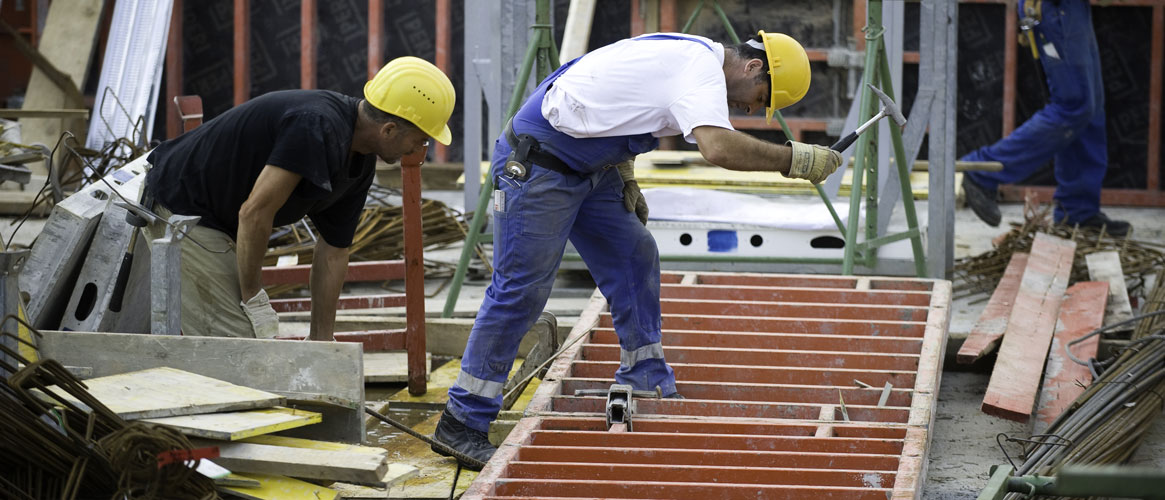Construction site hygiene encourages good housekeeping, provides workers with clean drinking water, sanitary restrooms, and washing facilities to clean up. These practices encourage good worker hygiene and help avoid cross contamination to safeguard everyone’s health and safety.
Housekeeping
Good housekeeping is critical for construction safety. Remember to:
- Clean the jobsite after major tasks or at least daily; avoid the buildup of hazardous, flammable, or combustible materials.
- Stack scrap lumber out of the way and remove protruding nails.
- Keep walkways, stairs, and work areas clear.
- Ensure that walking surfaces are as level as possible.
Drinking water
Clean drinking water can be provided by plumbed drinking fountains or with clean portable containers. Make sure that potable water containers are clearly labeled and have drinking fountain spouts or faucets that can be used to fill single-use water cups—water should not be dipped from the container. If there is a non-potable (non-drinkable) water source on the site, it should be clearly labeled that the water is not safe for drinking, washing, or cooking.
Bathroom Facilities
Separate bathroom facilities are required for every 20 employees (or fewer) of each sex on a job site. For example, if there are 30 men and 10 women, three bathrooms are required. The bathrooms may contain a toilet and urinal, but half of them must have a toilet.
If there are fewer than 5 employees on a job site, separate bathrooms for each sex are not required if they can be locked and contain a toilet. Bathrooms should be private and in good working order with an adequate supply of toilet paper. Inspect and clean bathroom facilities daily.
Washing facilities
Washing facilities on the jobsite will allow workers to wash their hands and avoid cross-contamination before eating, drinking, smoking, or heading home for the day. Workers can wash away harmful substances and use the washing area to service and decontaminate personal protective equipment (PPE). This is especially important to workers using potentially harmful substances such as paints, coatings, solvents, or other materials.
One washing station is required for every 20 (or fewer) employees on a jobsite. Wash areas should be clean with a good supply of water and soap, other skin cleansing agents, or special hazardous substance cleansing compounds. Wash stations require single-use drying towels or a warm-air hand dryer. Washing facilities must be located outside of the portable toilet, but convenient to bathroom facilities and should be labeled. On jobsites with fewer than five employees and only one portable toilet facility, the washing facility may be located inside the portable toilet station.
Do your part on the job to ensure good hygiene. Immediately report unsanitary or hazardous conditions on the jobsite to your supervisor. Participate in site cleanup activities, clean as you go, and keep the worksite clear of debris, trash, and hazardous substances. Use washing facilities to clean your hands and avoid cross-contamination to ensure a healthy work environment for all.
